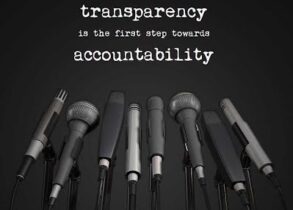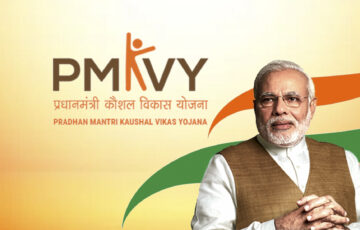Governance
Relevance
- GS Paper 2 Important Aspects of Governance, Transparency and Accountability, E-governance- applications, models, successes, limitations, and potential; Citizens Charters, Transparency & Accountability and institutional and other measures.
- Tags: #Governance #GoodGovernance #PrincipleOfGovernance #AspectsOfGovernance #UPSC #GS2Governance.
What is Governance?
- The World Bank Defines Governance as “the manner in which the power is exercised in the administration and management of a country’s economic and social resources for growth and Development”.
- 10th Five Year Plan defines Governance as “Governance relates to the management of all such processes that in any society, define the environment which permits and enables individuals to raise their capability levels, on one hand, and provide opportunities to realize their potential and enlarge the set of available choices, – on the other”.
According to United Nations principles of Good Governance
Political Governance
- Political governance is concerned with the formulation and implementation of policies, laws, and regulations by the government.
- A democratic political governance system emphasizes the participation of citizens in decision-making through elections and representation.
Administrative Governance
- Administrative governance deals with the day-to-day functioning of government agencies and departments.
- It focuses on the principles of bureaucracy, administrative ethics, and public service delivery.
Economic Governance
- Economic governance involves managing economic resources, fiscal policies, monetary policies, trade regulations, and financial oversight and economic development.
- Effective economic governance is crucial for the well-being of a nation’s citizens and the stability of global markets.
Social Governance
- Social governance focuses on addressing social issues, welfare schemes, and inclusive development.
- It encompasses education, healthcare, social justice, welfare programs, and the role of civil society in social governance.
Corporate Governance
- Corporate governance pertains to the rules, practices and principles governing the management and oversight of corporations and businesses.
- It involves the relationship between various stakeholders, such as shareholders, management, and the board of directors.
Difference Between Various Types of Governance
Democratic Governance vs. Authoritarian Governance
- Democratic governance emphasizes citizen participation, transparency, and accountability.
- Authoritarian governance concentrates power in the hands of a few, limiting civil liberties.
Example: India ( Democratic Governance) vs North Korea ( Authoritarian Governance)
Federal Governance vs. Unitary Governance
- Federal governance divides powers between central and state governments.
- Unitary governance concentrates power at the central level.
Example : India and Australia ( Federal ) vs UK and Japan (Unitary)
Parliamentary Governance vs. Presidential Governance
- Parliamentary governance separates the head of state and head of government roles and executive power is vested in the elected parliament or legislature.
- Presidential governance combines these roles and executive power it is vested in a separate elected president.
Example: India and UK ( Parliamentary) vs USA ( Presidential)
Stakeholders of Governance
Government
- Governments at various levels are the primary stakeholders in governance.
Its can be categorized into 2 broad categories:
-
- Legislature and
- Executive
Each having defined zones of functions and specified roles for maintaining Good Governance.
Citizens
- Citizens are the ultimate stakeholders in governance . Citizens play a vital role in governance through voting, advocacy, and civic engagement activism which is fundamental to democratic governance.
Civil Society
- Civil society organizations, including NGOs, advocacy groups, and grassroots movements, influence governance.
- They serve as watchdogs, monitor government actions, advocate for specific issues, and bridge the gap between citizens and authorities.
Media
- The media acts as a watchdog, providing information and scrutinizing government actions and bridge the gap between citizens and authorities.
- A free and independent media is vital for transparency and the dissemination of information.
Judiciary
- The judiciary interprets the law and safeguards the constitution.
- The judiciary’s role in good governance is to act as a guardian of the rule of law, individual rights, and justice.
- An independent and effective judiciary is a cornerstone of democratic governance and the protection of human rights.
International Organisations
- International bodies like the United Nations and World Bank influence global governance.
- They facilitate international cooperation, peacekeeping, humanitarian aid, and development efforts, influencing governance on a global scale.
Good Governance vs. Bad Governance
| Good Governance | Bad Governance |
| Characterised by transparency, accountability, and the rule of law. | marked by corruption, lack of transparency, and abuse of power. |
| Institutions operate efficiently, public resources are managed responsibly, and the rights and needs of citizens are upheld. | It often leads to inefficiency, mismanagement of resources, and violations of civil liberties.
Inadequate public services, discrimination, and unequal distribution of benefits are common in such systems. |
| It fosters social justice, economic development, and the protection of human rights. | Bad governance erodes trust in institutions, fosters social unrest, and hampers economic growth. |
| Good governance encourages citizen participation, ensures equal access to opportunities, and builds trust between the government and its people. | It stifles accountability and diminishes the well-being of citizens, particularly the marginalised and vulnerable. |
E-Governance
- E-Governance or Electronic Governance, is a transformative approach to governance that leverages Information and Communication Technologies (ICTs) to enhance the efficiency, transparency, and accessibility of government services and processes.
ICT + Governance = E-Governance
Features of E-Governance
- De-bureaucratization: E-Governance reduces the gap between citizens and government services, minimising dependence on bureaucracy.
- E-Services: E-Governance offers G2C (Government to Citizen), G2B (Government to Business), G2E (Government to Employee), and more services via the Internet.
- International Services: E-Governance extends essential services to citizens abroad for work or other reasons.
- Enhanced Citizen Participation: E-Governance enables citizens to express their views on government decisions, bills, and acts easily.
- Economic Development: E-Governance provides vital economic information online, saving time, reducing delays, and boosting economic activity.
- Reduced Inequality: E-Governance empowers individuals with knowledge, bridging information gaps and reducing disparities at minimal cost and effort.
Challenges in Governance
Corruption
- Corruption undermines the principles of good governance by diverting resources away from public welfare and into the hands of a few.
- Corruption hampers effective governance and erodes public trust.
Bureaucratic Red Tape
- Bureaucratic red tape refers to excessive and often unnecessary administrative procedures, regulations, and paperwork that can hinder the efficiency and effectiveness of governance.
- It leads to Slow Decision Making , reduces flexibility , impedes service delivery etc.
Political Interference
- Political interference in administrative matters can affect impartial decision-making.
Inequality and Social Justice
- Addressing inequality and ensuring social justice are key challenges in governance.
- Ensuring that all citizens have equal access to opportunities and benefits is a fundamental challenge.
Lack of Accountability
- Weak mechanisms for holding public officials accountable can lead to abuse of power and misuse of public funds.
Political Instability
- Political instability, including conflicts, coups, and transitions, can disrupt governance structures and impede progress.
Weak Rule of Law
- Inadequate legal frameworks and a lack of enforcement can undermine the rule of law, 9 resulting in impunity and injustice.
Cybersecurity Threats
- In the digital age, cybersecurity threats pose significant challenges to governance.
- Protecting critical infrastructure and sensitive data is essential for national security and stability.
Initiatives for Good Governance
- Right to Information Act, 2005.
- 73rd and 74th constitutional amendment to decentralize people participation.
- Good Governance day (25th December).
- Aspirational district Programme.
- Social Audit.
- National E- Governance Plan( NeGP).
- E-Governance and use of ICT tools.
- Citizens charter.
- Codification of labour laws.
- Insolvency and bankruptcy Code 2016, etc
Conclusion
- Governance is not a static concept; it evolves with changing societal needs and global dynamics. A comprehensive understanding of governance is essential to navigate the complex landscape of public administration and policy making.
- Mastering the various aspects of governance, different governance models, and recognizing the roles of stakeholders is essential of Growth and meaningful contribution towards nation building.
- Addressing governance challenges can lead to positive changes in society by upholding the values of transparency, accountability, and justice.
| Mains Question
In the context of contemporary governance challenges, elaborate on the vital roles played by diverse stakeholders in ensuring good governance. Illustrate initiatives aimed at promoting and enhancing the principles of good governance. |








